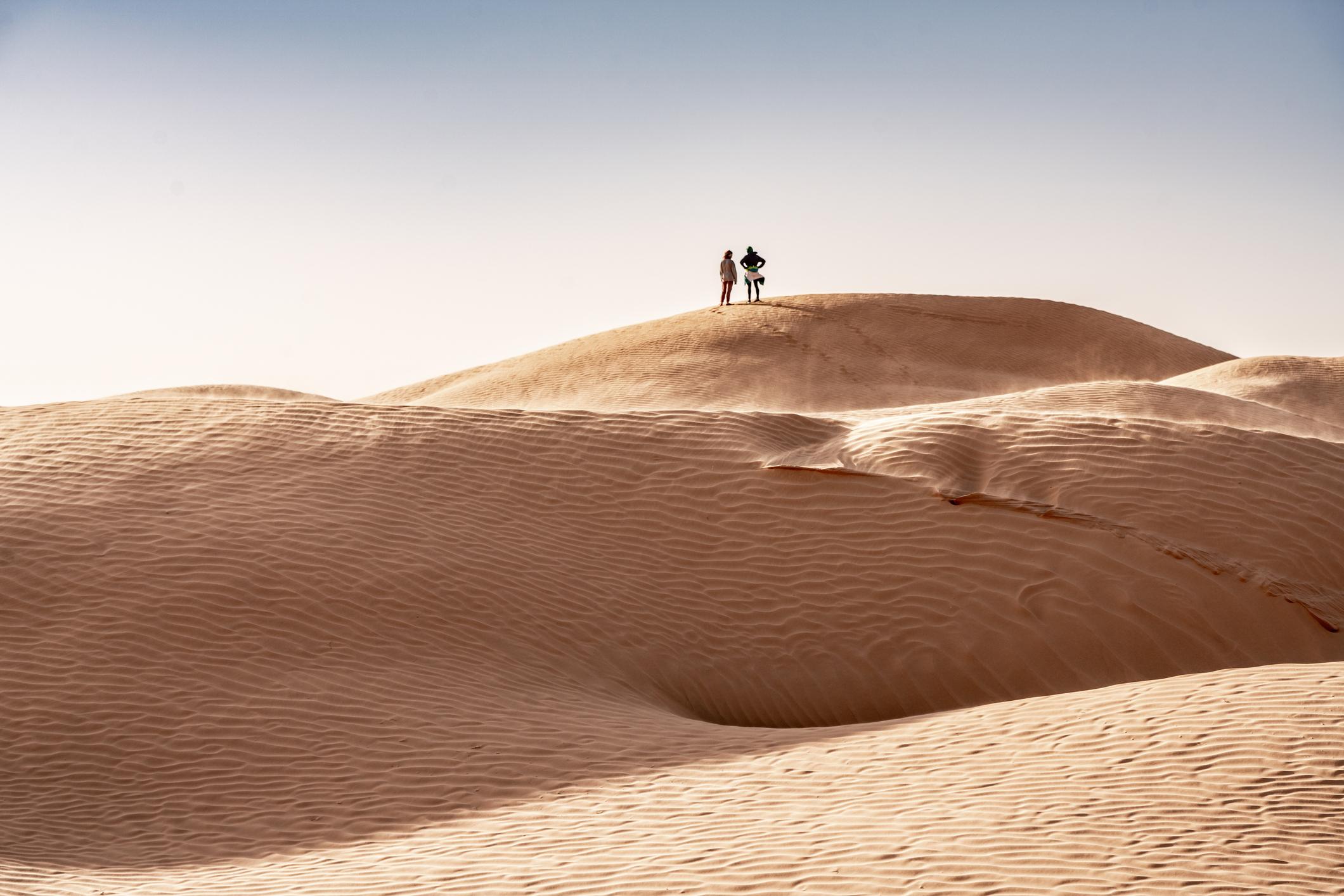Tunisia is a country known for being a ‘3S’ destination (that’s ‘sun, sea and sand’), with most tourists flocking to the beach resorts on its Mediterranean coast. But Ben Azouz Houssem, who runs an adventure travel company in the country, is eager to stress that there’s far more to Tunisia than this.
“The problem with Tunisia is it's mainly known as a beach holiday destination,” he says. “Tunisia is around the size of England, but the diversity of the landscape is really amazing. The south is extremely exotic, even for us Tunisians in the big cities of the north; it has oases, the Sahara Desert and the rocky mountains in the south east. The south is really very well adapted for adventure.

“The other thing about Tunisia is its rich cultural heritage. Tunisia’s original inhabitants are the Berbers, or ‘Amazigh’ as we call them, like Morocco - they comprise about 10% of the population. We had a lot of invaders who left traces of their presence. There were the Carthaginians who founded Carthage in Tunisia. Then the Romans defeated Carthage and founded the Roman Carthage. Then we had the Byzantines, the Vandals, the Arabs, and then the French colonised Tunisia.
It has oases, the Sahara Desert and the rocky mountains in the south east...
“But there’s also a very strong influence from our Mediterranean neighbours like the Italians and the Maltese. Because of this rich history we have a lot of archaeological sites and ruins. Tunisia has one of the best collections of mosaics in the world, in the Bardo Museum.”
We spoke to Houssem about some of the best activities to do, and places to visit, for travellers visiting Tunisia in search of adventure.
The Basics
- Currency? Tunisian Dinar
- Language? Tunisian Arabic, French
- Plug adapter? Multiplug (C, D or M)
- Do I tip? Yes, both trekking guides and hospitality staff (10%-15%)
- Average beer price? £1.25
- Best adventure? Hike Desert, Canyons and Berber Villages in Tunisia
The Best Things to Do in Tunisia, Mapped
We've listed the best adventures and places to stay on this interactive Tunisia map.
7 of the Best Things to do in Tunisia
1. Trek the Great Dahar Crossing
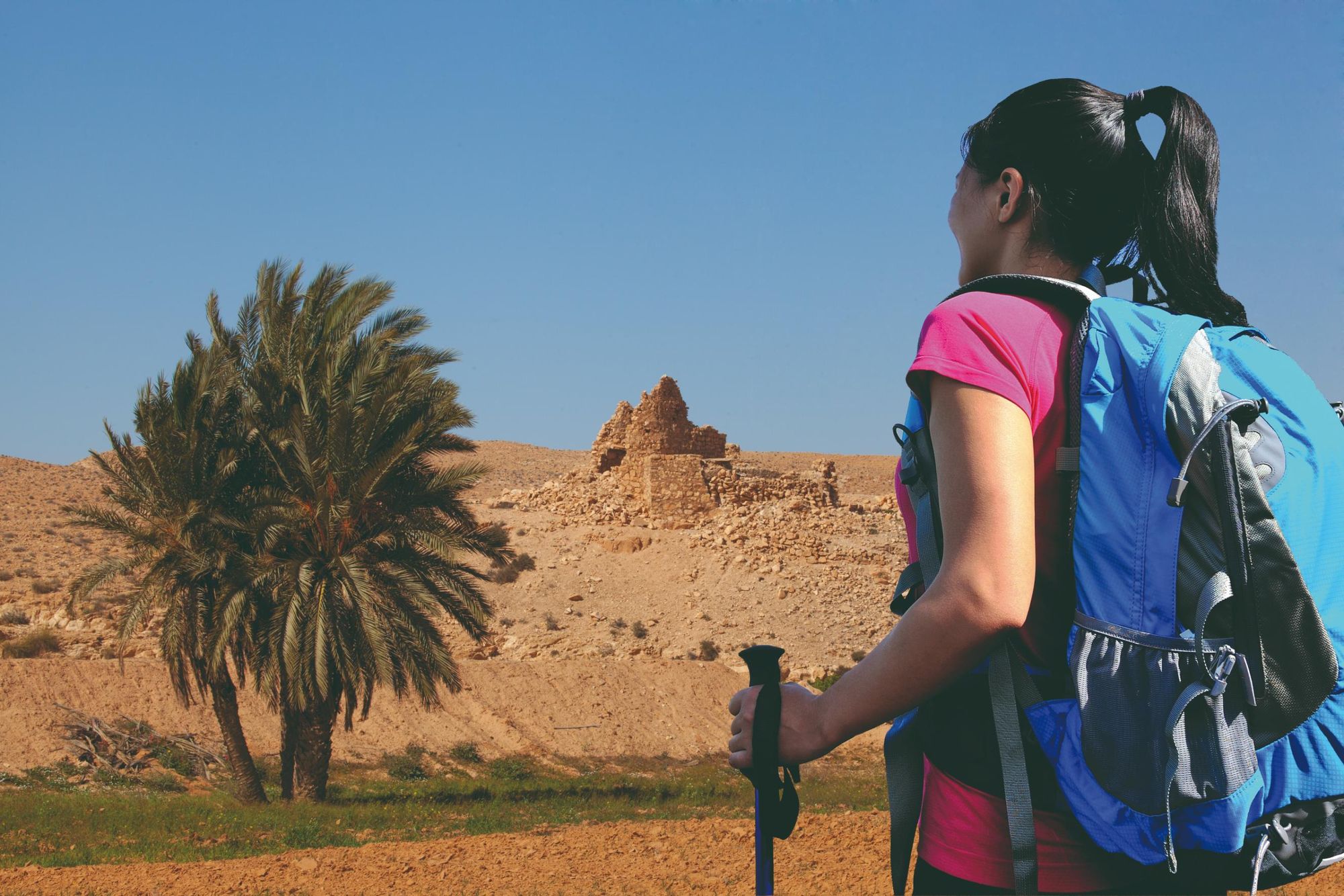
If you enjoy multi-day hikes, you’ll be interested to know that Tunisia recently opened its first long distance trekking route, called The Great Dahar Crossing (or the Dahar Hiking Trail). It’s a 136.7 mile (220km) route divided into 12 day-long stages, taking you through Dahar - a remote, arid region in the southeast of Tunisia, between the Sahara Desert and the Mediterranean coast.
One of the most interesting stages of the trail is the 5 mile (8km) hike between the Amazigh town of Douiret and Chenini, an impressive fortified granary (also known as a ksar). You’ll travel across a sun-baked plateau studded with palm, fig and olive trees. Another is the seven-point-four mile (12km route) from Ksar Hadada - a filming location in the Star Wars franchise - across sandstone hills to the 4,500 year old rock paintings in Insefri.

We’d always recommend you hike the Dahar Great Crossing with a local guide. Not only will they aid you with navigation and staying safe in the inhospitable desert environment, they’ll also have in-depth knowledge of the places you visit.
2. Explore Dahar’s Historic Fortified Villages and Troglodyte Homes
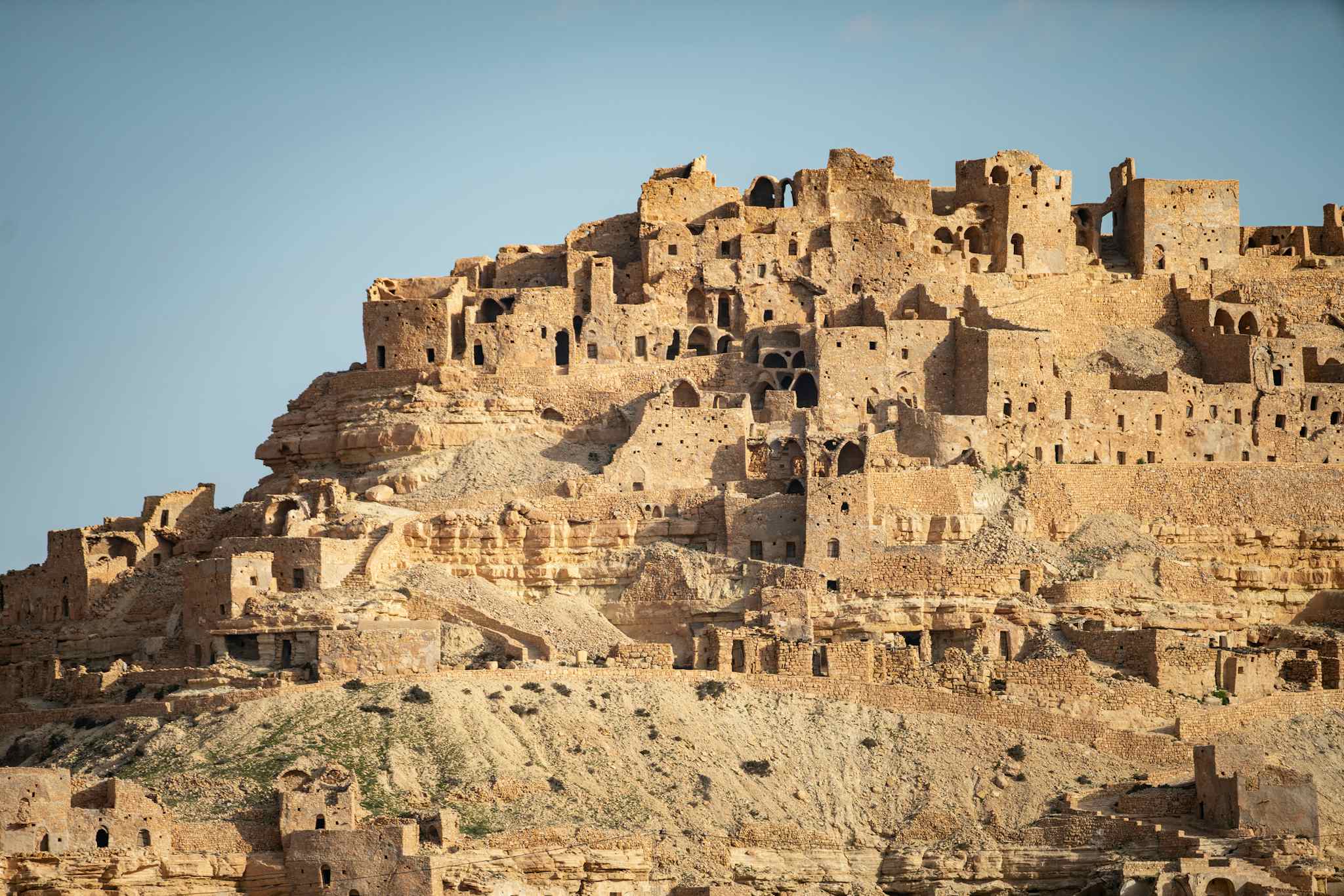
Dahar is home to numerous historic fortified villages and troglodyte homes, which are cave dwellings built into the mountains. Houssem recommends taking the time to explore them.
“This is where the Amazigh took refuge for centuries. When they were attacked they went to these mountainous areas, so the villages are built like fortresses,” he says. “The Amazigh tribes used to attack each other, but there were also invaders like the Tuareg from the Sahara, the Romans and the Arabs. There are some really interesting Amazigh architectural techniques to see in this area, such as the fortified towns and troglodyte homes, with rooms carved into the rock and surrounding a sunken central courtyard. So the rooms are very fresh and cool in summer, and warm in winter.

“Unfortunately, a lot of the villages are abandoned - the new villages, with modern commodities like electricity, are nearby. But the landscape is amazing - and you’ll get to see how the Amazigh used to live.”
The 12th century ksar of Chenini is one of the best examples of Amazigh architecture. It’s built between two hilltop ridges, with cave-like dwellings dug into the sandstone rock. At the top of the hill is the white-washed mosque of the Seven Sleepers. Head to Matmata and you’ll find Amazigh homes dug into the arid rock, up to six metres underground. Think Luke Skywalker’s uncle’s homestead on Tatooine. In fact, the filming location of the Lars homestead is actually in Matmata - hotel Sidi Driss.
3. Hike the Sidi Bouhlel Canyon
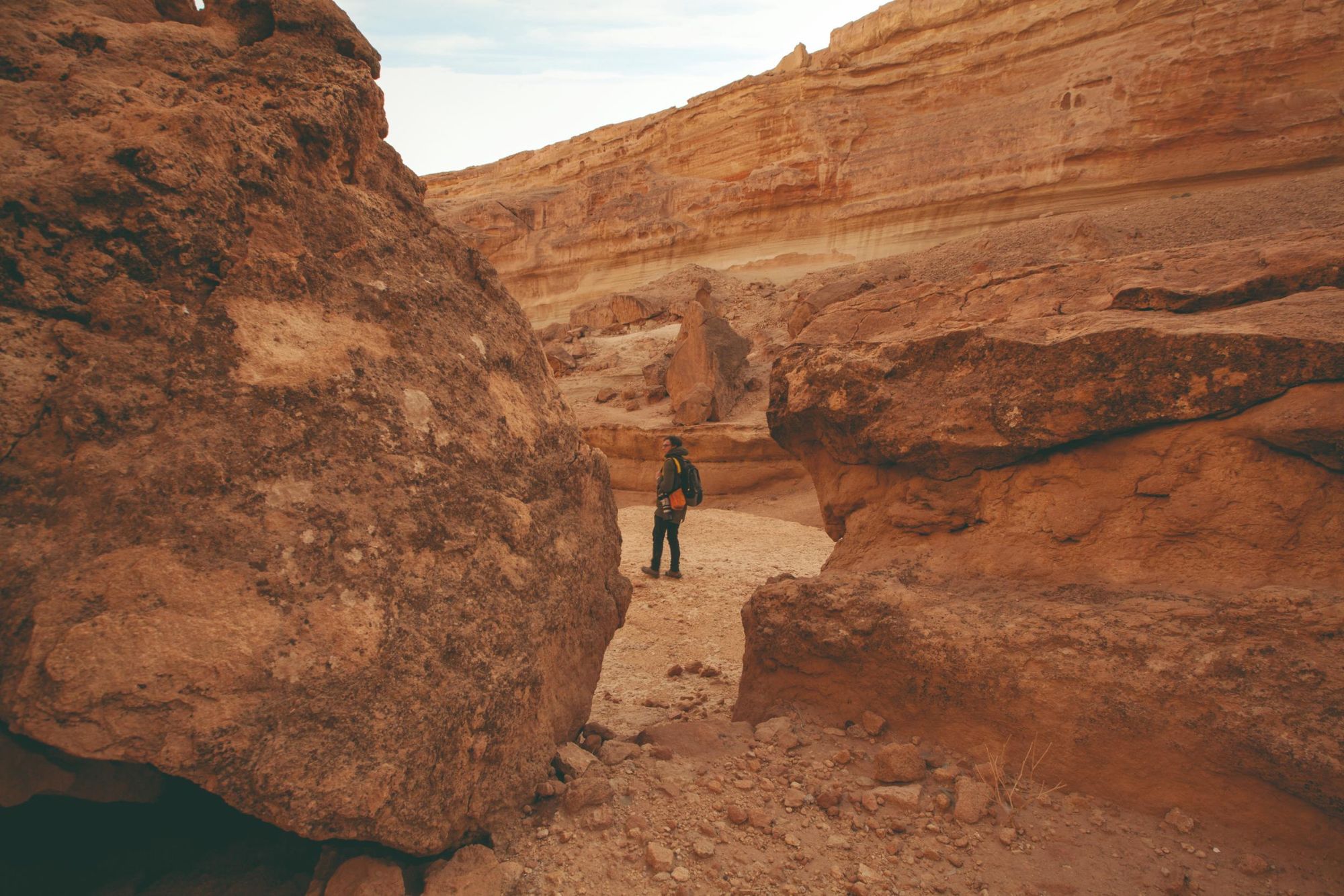
Hike through the impressive Sidi Bouhlel Canyon, near the town of Tozeur in south Tunisia. You’ll be captivated by the towering sandstone cliffs and winding trails hidden amongst rock formations. Within the rock strata you can see marine fossils.
Film buffs may recognise the area - this is where a young Annakin Skywalker went pod racing, and it’s also a location in Indiana Jones: Raiders of the Lost Ark. The hike (5.5 miles/9 km) takes around four hours, as chances are you’ll be stopping to admire the views.
4. Take a Camel Trek in the Sahara Desert
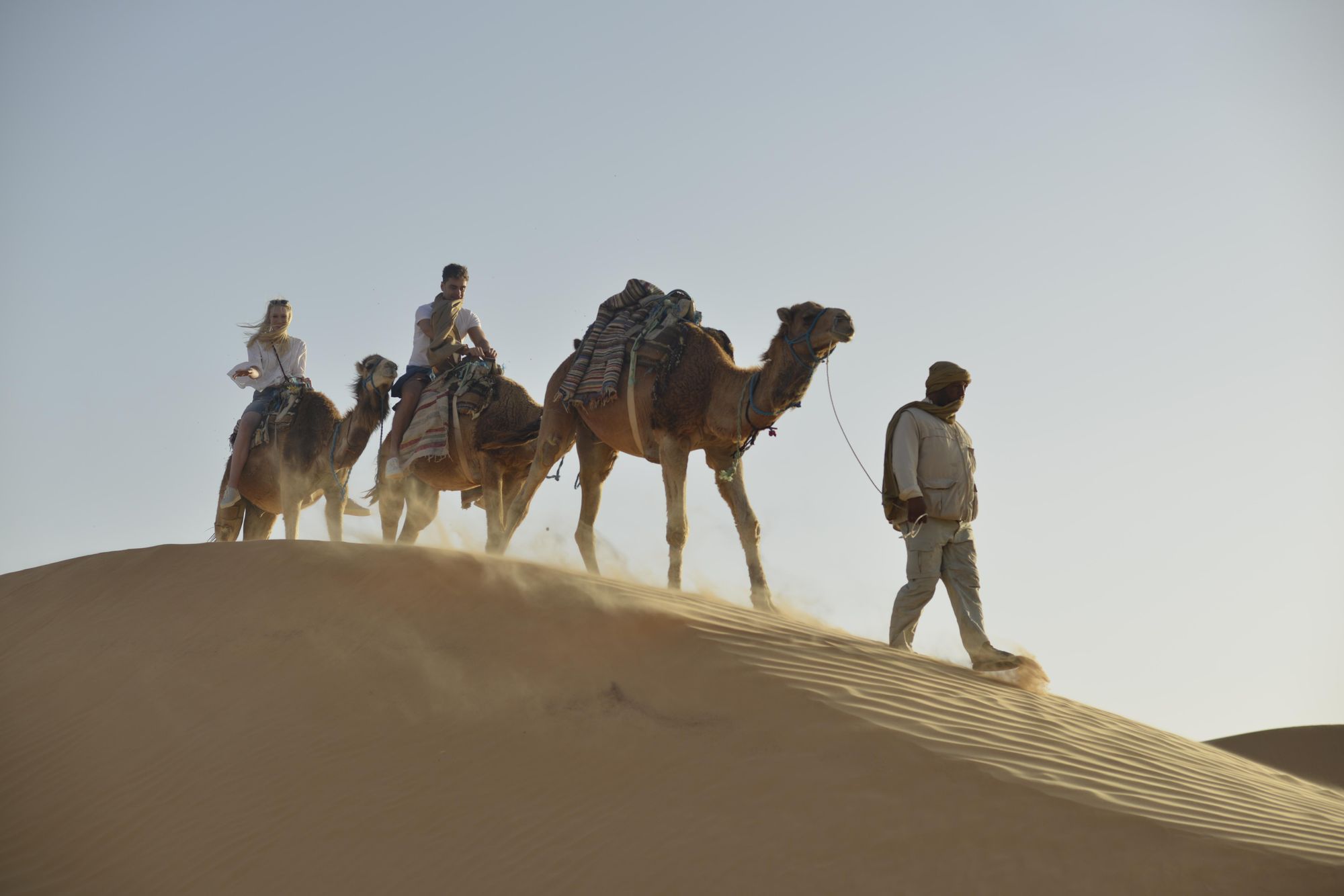
No trip to Tunisia would be complete without experiencing the vast Sahara Desert. We recommend the Grand Oriental Erg, which is known for its striking wind-sculpted dunes, which extend to the horizon. You can trek by camel into the desert, then set up camp and enjoy the solitude of the dunes.
“At night in the desert the sky is clear - you can see the Milky Way,” Houssem says. “The desert is a special place. The sand dunes move in the wind. When they move, sometimes you find some flat areas where you see the soil, and in these places you can find shark’s teeth, or arrowheads and also pottery.
“It doesn’t rain in the desert very often, but it will sometimes - that’s how the Berbers managed their agriculture - it's strong rain, like storms. The day after, you see plenty of flowers; whole sand dunes covered in flowers.”
5. Visit the Chott el Jerid Salt Lake
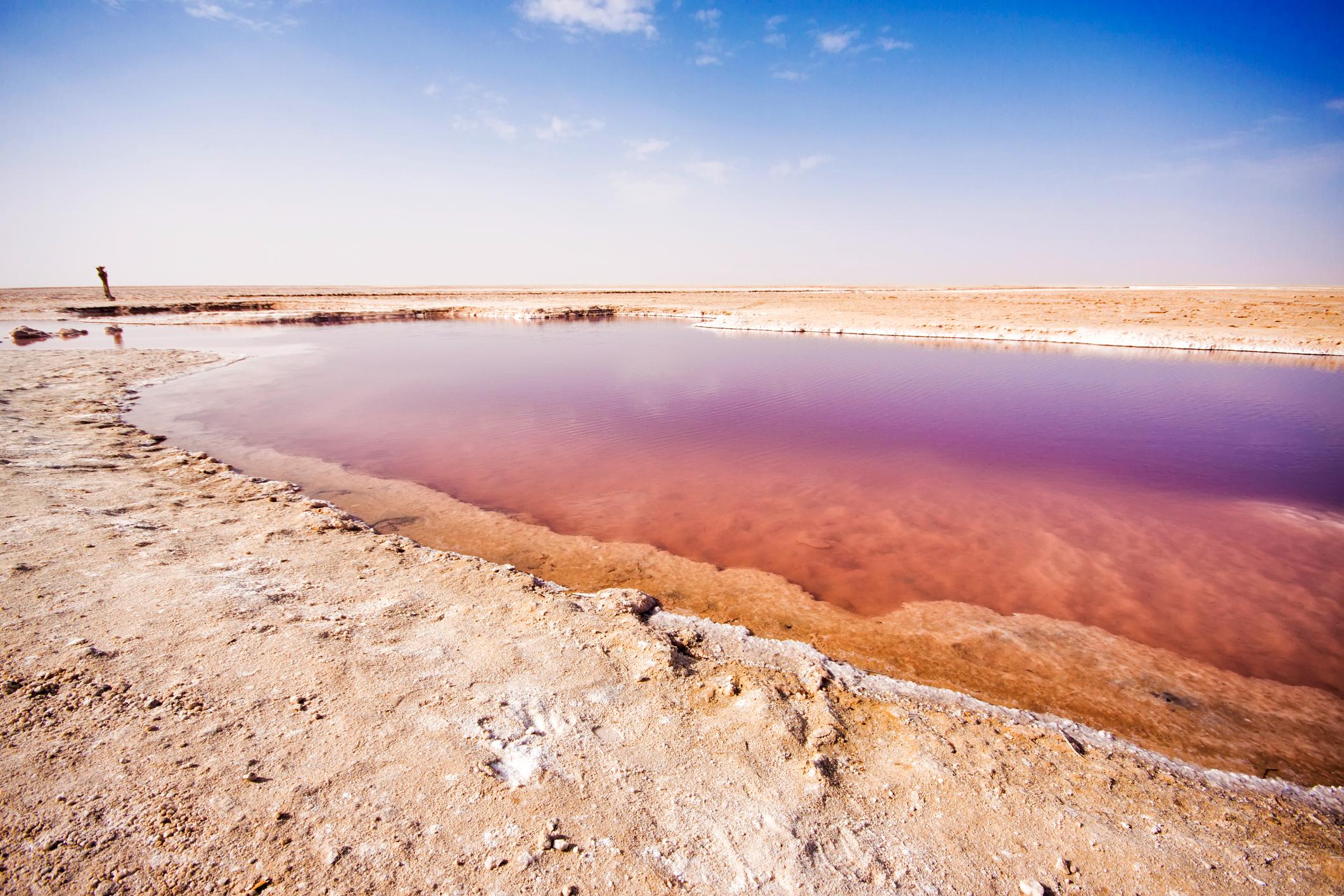
The Chott el Jerid Salt Lake is a vast expanse of salt flats that create a surreal and otherworldly landscape. During the dry season, the lakebed dries up, leaving behind a crust of salt that reflects the sunlight in a dazzling display. Come here for sunset or sunrise and the sight is even more spectacular.
“Like in many countries millions of years ago, Tunisia was covered by the sea,” Houssem says. “And that's why in the middle of the desert you can find the shark’s teeth. Then the sea withdrew and left these fossils and salt lakes. We have lots in Tunisia - the biggest is Chot el Jerid.”
6. Go Mountain biking in the Kroumirie Mountains
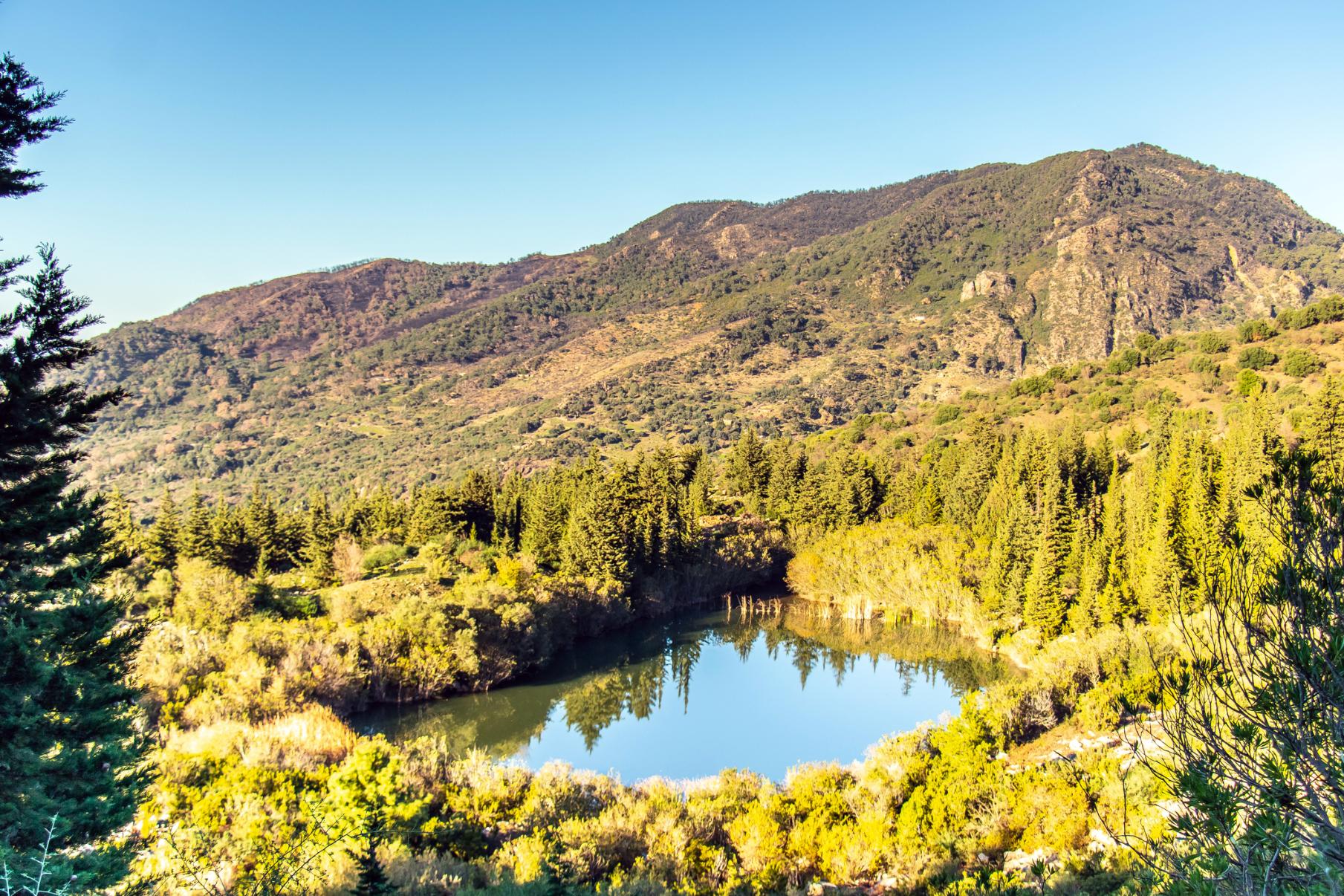
The previous five activity suggestions have concentrated on the desert regions of the south. But we also recommend visiting the verdant Kroumirie Mountains in the northwest of Tunisia as a contrast. They’re carpeted in forests consisting predominantly of cork oak, with ferny undergrowth where you’ll find chanterelle and bolete mushrooms in autumn.
This is an ideal spot for mountain biking, with tree-lined roads with hairpin bends and boulder-strewn downhill tracks. You can hire a mountain bike or take a cycling tour from Dar el Ain, who also rent camping equipment if you fancy a multi-day ride.
7. Learn to Scuba Dive in Djerba
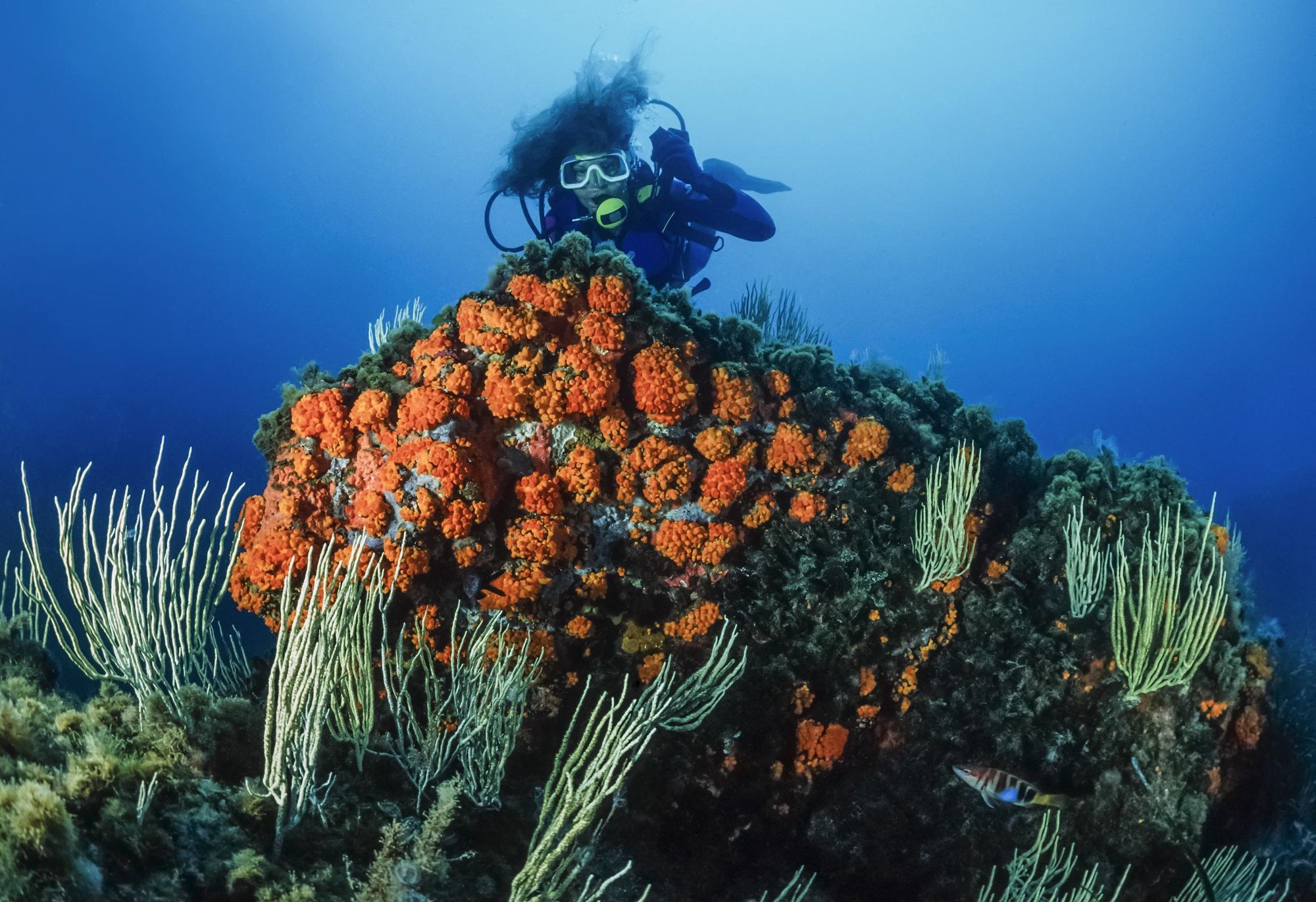
With over 745 miles (1,200km) of coastline, there’s plenty of opportunities for watersports in Tunisia. Scuba diving is particularly popular, thanks to warm ocean temperatures and a range of dive sites off the Tunisian Coast. Base yourself on the island of Djerba, where you’ll find a number of scuba diving operators to choose from.
Dive sites around Djerba include the coral-encrusted wrecks of the Edda and the Eso ships, and Octopus Canyon, an underwater rock canyon where you’ll find plenty of octopuses, grouper fish and other colourful marine life.
Where to Stay in Tunisia
Douiret
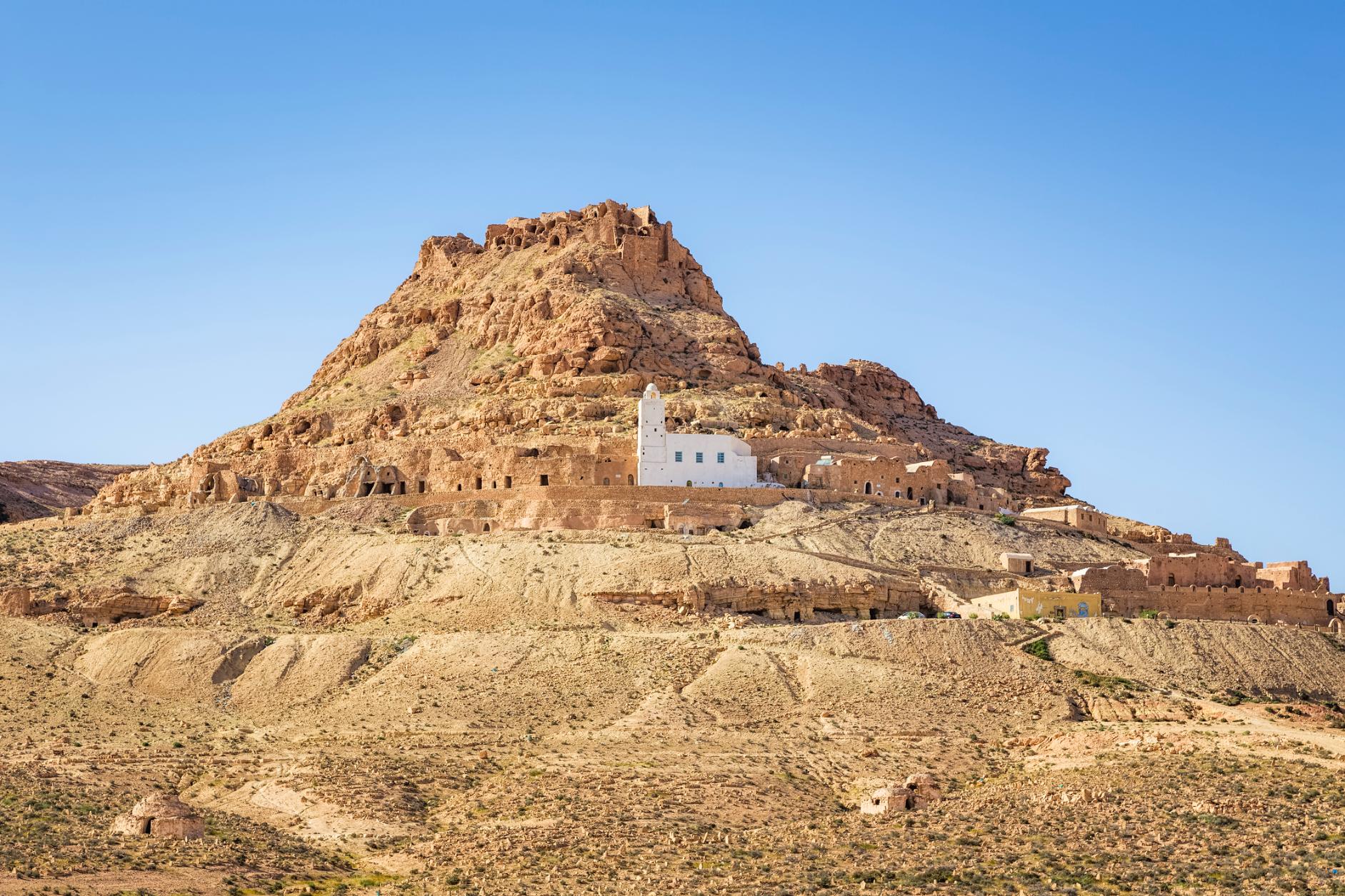
Douiret is a 600-year-old village, hewn into a sandstone hill in the Dahar region, and blending into the arid background of the desert. A whitewashed mosque at the top of the hill is the most striking feature in this unique landscape.
Old Douiret is largely abandoned, but you can stay in the Gîte Douiret, a traditional troglodyte dwelling, in rooms carved into the rock. You’ll be able to enjoy the stillness and silence of the desert, whilst being well-located for hiking in Dahar, and visiting nearby attractions such as Chenini.
The Grand Oriental Erg
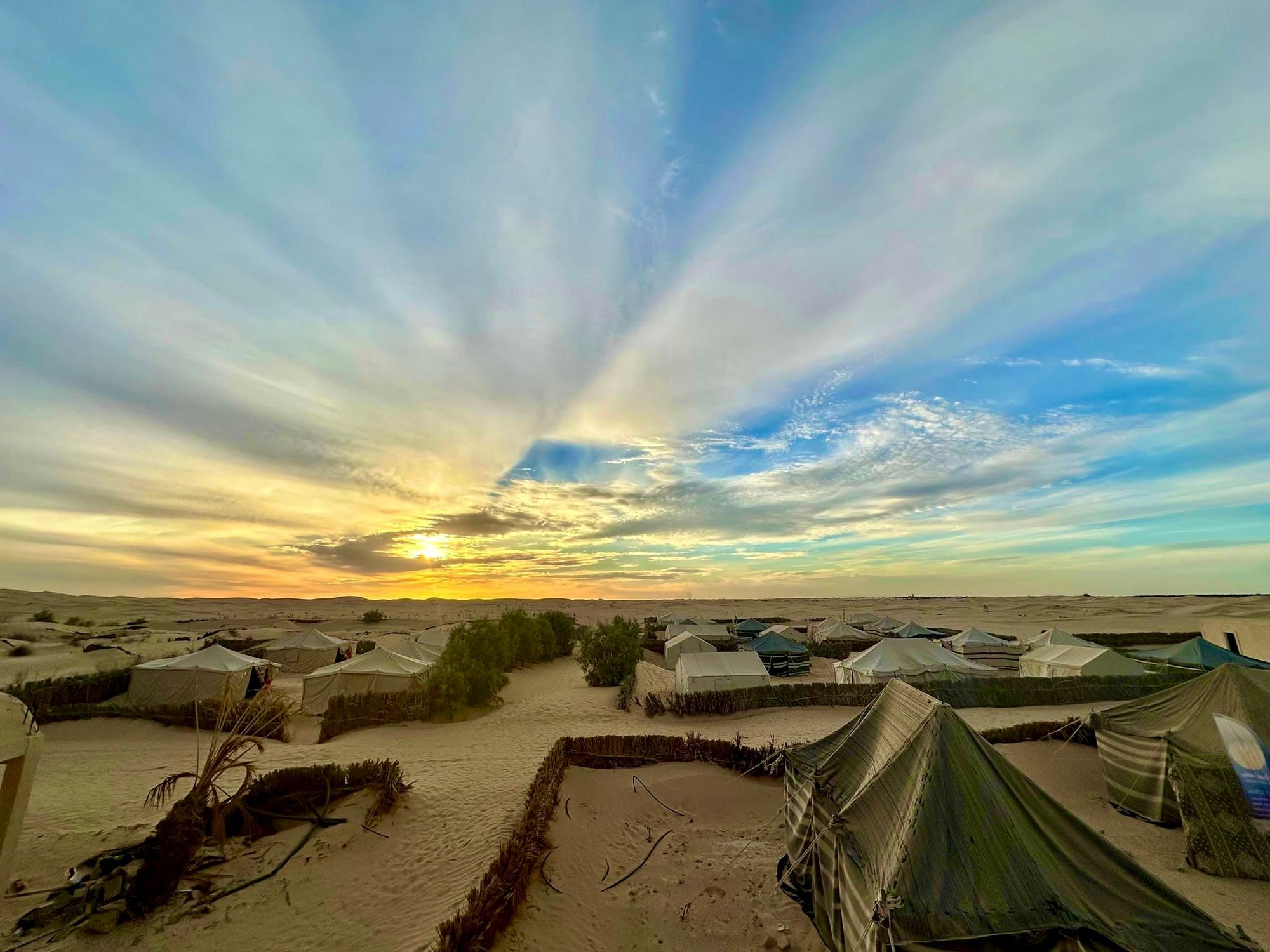
The Grand Oriental Erg is what you expect the Sahara Desert to look like - a vast expanse of undulating sand dunes. It’s an adventure hotspot, where you can go hiking or on a camel expedition into the desert wilderness. Make sure you travel with an experienced Amazigh guide, who will help you make camp in the evenings. There are also more luxurious fixed tent accommodations where you can stay.

Tozeur
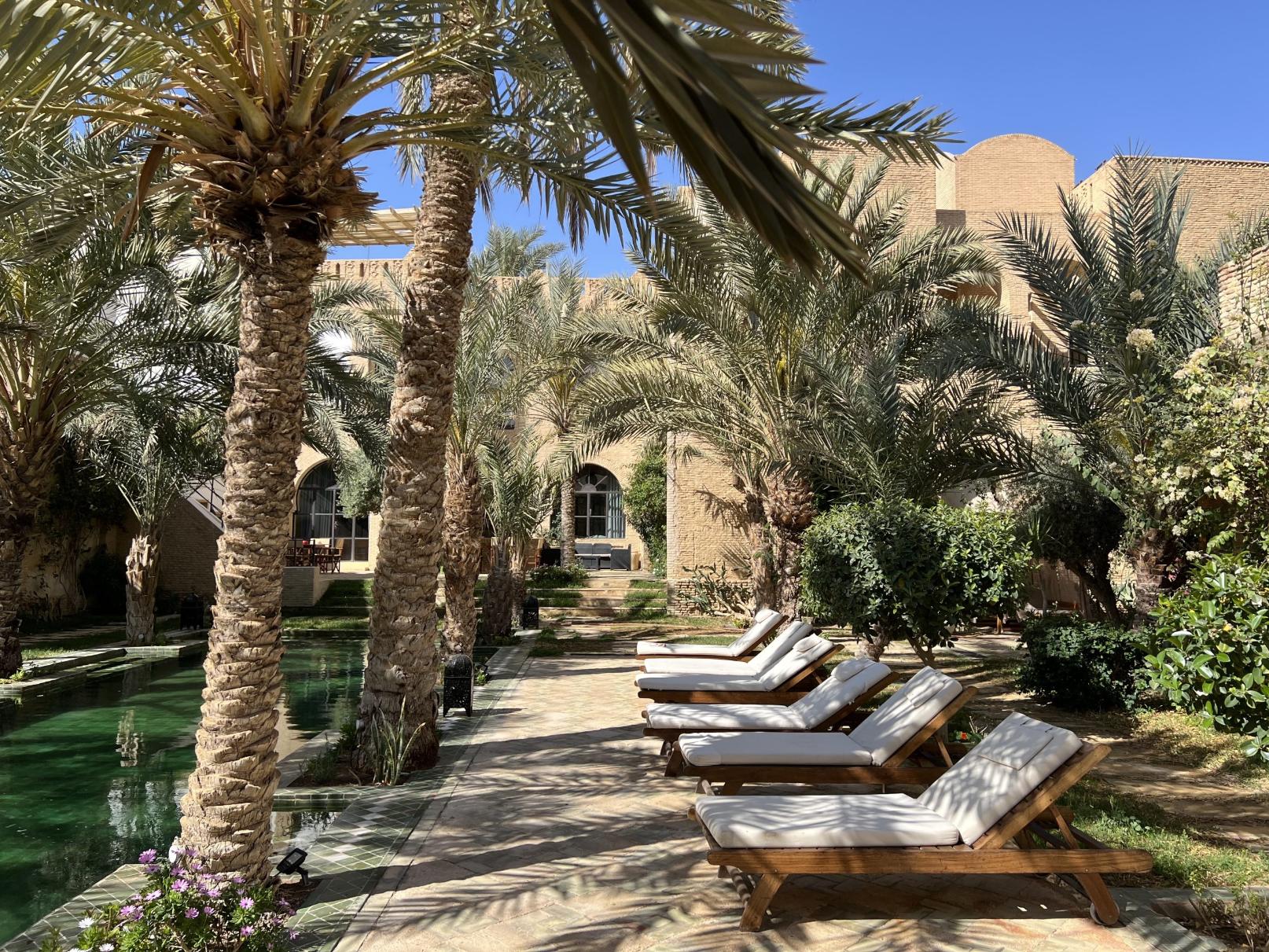
Tozeur is a small city in southern Tunisia, on the edge of the Sahara Desert. It is located near a large oasis, where there are a reported 200,000 date palms (a number we can’t verify), and walking through the palm grove provides a shady respite from the desert heat. The medina, made with locally made bricks in a geometric pattern, is beautifully well preserved. Within its fortified walls you’ll find a number of boutiques, local restaurants and affordable luxury riads.
Tabarka
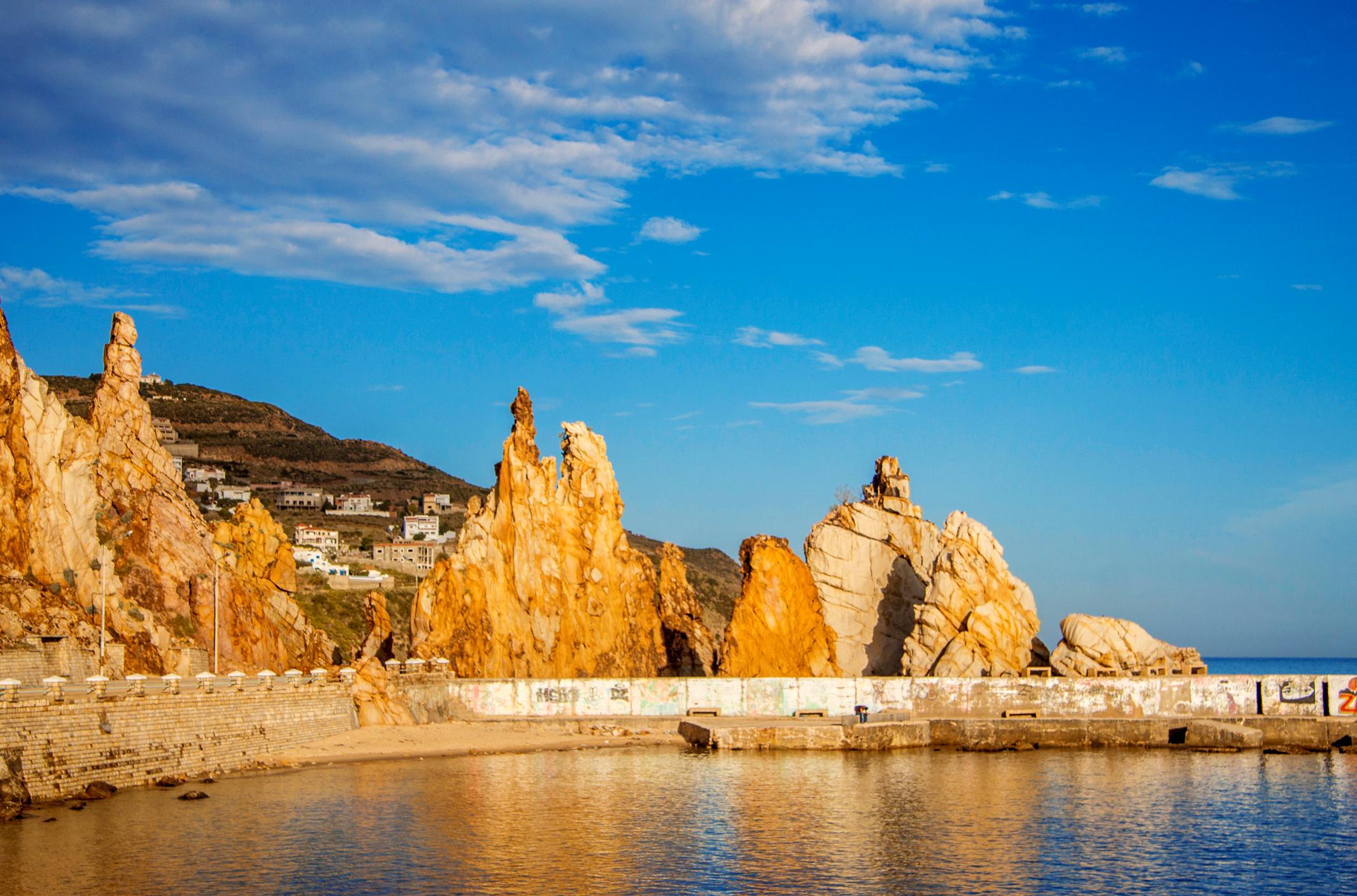
An unspoilt coastal town located in the northwest of Tunisia, Tabarka nestles between the ocean and the mountains. There are plenty of options for watersports such as sailing and scuba diving, as well as relaxing on the expansive beach. Travel south to hike or mountain bike in the lush Khoumirie mountains - you can get there and back in a day. There are plenty of accommodation options in beach resorts or local guesthouses.
When to Visit Tunisia
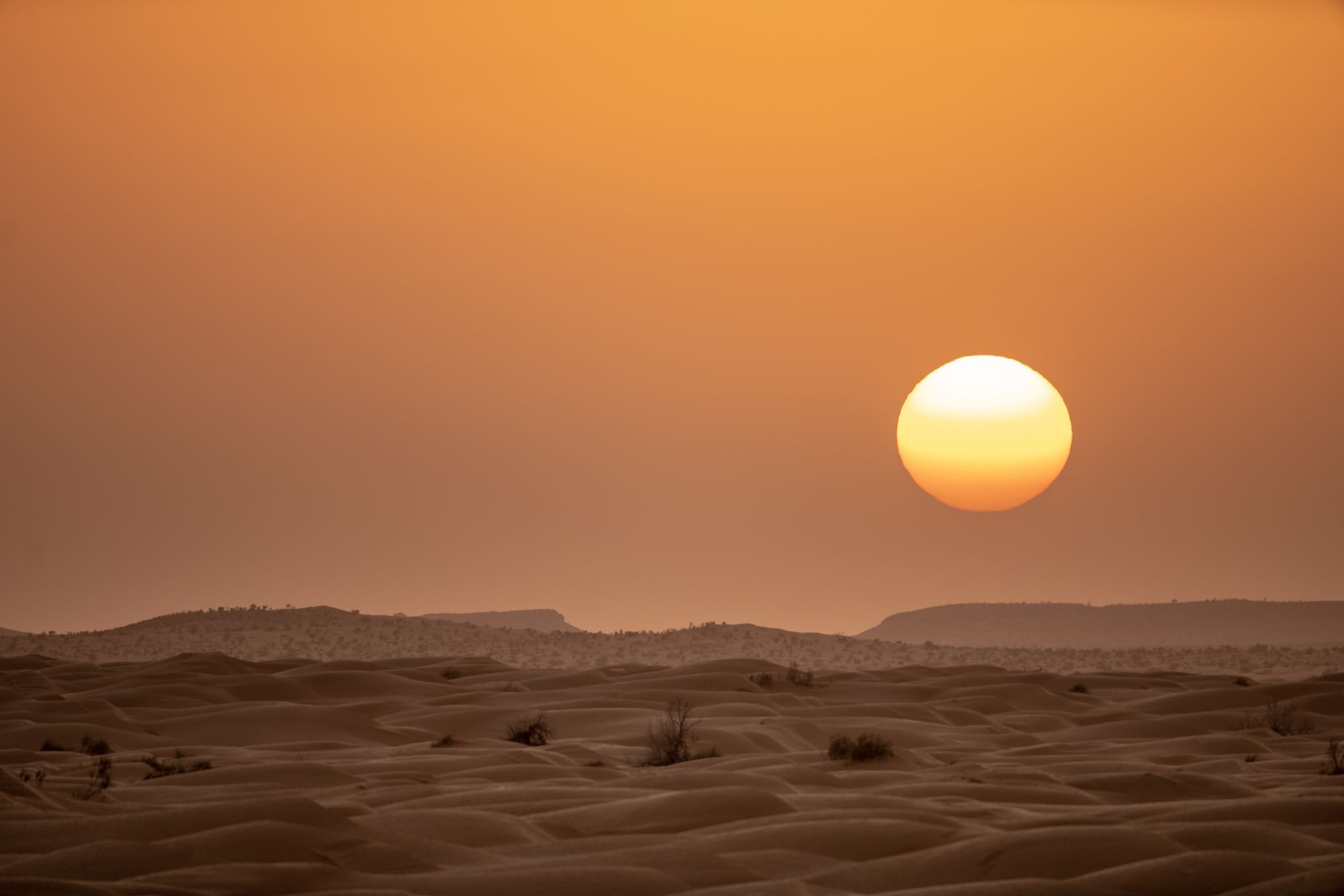
The best time to visit Tunisia for an adventure trip is during the spring (March to May) or autumn months (September to November). During these periods, the weather is mild and pleasant, making outdoor activities more enjoyable.
“We tell people to visit from September to May,” Houssem says. “Avoid the south in the summer months because it’s too hot. In winter in the desert during the daytime it's very nice - about 20 degrees celsius, but at night it drops and is quite cold, so you need to be prepared for that.”
Inspired? Check out our Hike Desert, Canyons and Berber Villages in Tunisia adventure.


